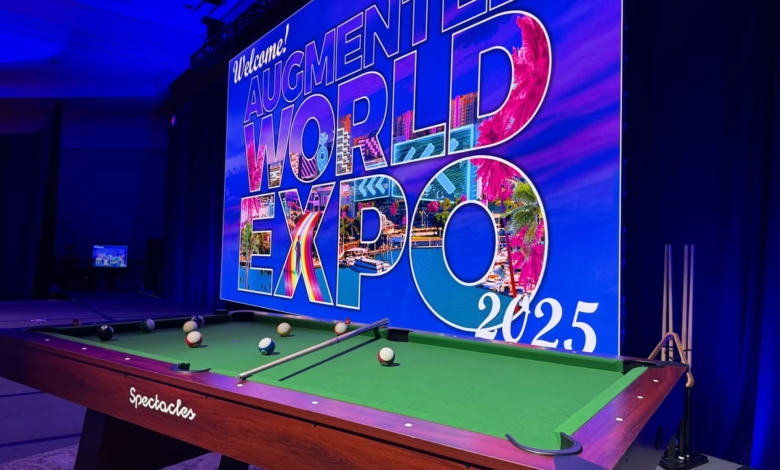15 Years of AR Innovation: Augmented World Expo With Ori Inbar

▼ Summary
– The Augmented World Expo 2025 highlights XR going mainstream, with Snapchat’s Spectacles glasses demonstrating AR-assisted pool shots.
– Ori Inbar, co-founder of AWE, notes the event’s growth from 300 attendees in 2010 to 5,000 today, merging AR and VR under one conference in 2015.
– Mobile AR is widely adopted by Gen Z for socializing and shopping, but better form factors like Spectacles are needed for improved experiences.
– Inbar predicts future XR devices will converge into one versatile product, possibly using direct retinal projection for both AR and VR capabilities.
– Current challenges in XR include achieving a wide field of view and seamless AR integration, but advancements like Vision Pro and Quest 3 show promising progress.
Augmented reality has evolved from niche technology to mainstream adoption, a transformation vividly showcased at this year’s Augmented World Expo. During the event, co-founder Ori Inbar demonstrated how Snapchat’s Spectacles now enable practical AR applications, like guiding pool shots through real-time overlays, hinting at the technology’s expanding consumer potential.
Inbar reflected on the industry’s journey since launching the expo in 2010, when AR was still speculative. “Back then, we had 300 attendees and 20 exhibitors,” he noted. “Now, it’s 5,000 participants and 250 exhibitors.” The 2015 merger with UploadVR marked a pivotal shift, uniting AR and VR under the broader XR umbrella as complementary technologies.
Mobile AR already reaches a third of the U.S. population, primarily through social and shopping applications, with Gen Z driving adoption. While VR headsets currently deliver the most immersive AR experiences, Inbar emphasized that wearable AR glasses, like Snap’s Spectacles or Meta’s Ray-Bans, cater to specific use cases. “People choose devices based on context,” he explained. “Glasses for mobility, headsets for depth.”
The conversation turned to technical hurdles, particularly field of view. Current AR glasses lag behind VR headsets in display breadth, but Inbar predicts convergence: “Future devices will blend AR and VR capabilities seamlessly.” He envisions lightweight retinal projectors, a decades-old concept now nearing feasibility, as the ultimate solution, enabling both augmented overlays and full VR immersion in a single form factor.
When asked about industry bottlenecks, Inbar shifted focus from hardware limitations to design challenges. “The real barrier isn’t technology, it’s crafting AR interfaces that enhance reality without overwhelming users.” He cited Apple’s Vision Pro as a milestone, despite its VR foundation, for prioritizing AR-centric language and functionality.
The debate over terminology, AR versus VR, reflects deeper industry tensions. Inbar coined “AR on VR” to describe headsets like Vision Pro, while Hamilton proposed “AR passing through VR.” Both agreed that as hardware evolves, distinctions will blur. “In ten years,” Inbar concluded, “the best device won’t be labeled, it’ll just work.”
The interview underscored a key theme: AR’s growth hinges not on futuristic promises, but on refining today’s tools. With major players investing and Gen Z embracing the technology, the foundation for widespread adoption is already here. The next decade will focus on making these experiences intuitive, unobtrusive, and indispensable.
(Source: UploadVR)


